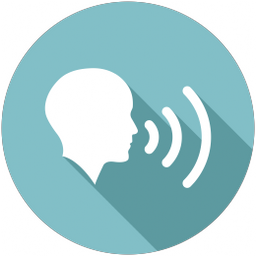Buy more to save more, money off, sale, special offer, spin the lucky wheel... So many different expressions to achieve one goal – conversion. But which method really works?
There are so many chance games out there for a reason – from a chips box offering customers to win 1 out 1000 prizes to scratch cards found in online delivery boxes, encouraging customers to discover one of the amazing treats. Are you wondering why so many companies keep doing it?
Posted in Archive, Conversion
published on Tuesday, 24 November 2020
When Negative Branding works
''Read this, you loser..''
Quiz time! What do Weekend Offender, Gucci Guilty, Monster Energy, Fresh Ego Kid, Arrogant Bastard Ale, Dior Sauvage have in common?
That’s right: these are all brand or product names with a negative, dark or unpleasant connotation. Terms like offender, monster, and bastard are all related to negative concepts in our brains.
But did you know that this type of “negative” branding can lead to the most positive outcomes? Recent research shows that negative branding can make brands more appealing to members of the target audience, and increases their willingness to pay.
In this blog, you’ll learn why and when negative branding works, so you can use it to your advantage.
Are you ready to discover the bright side of negative branding? Just keep reading!
Posted in Archive, Advertising
published on Tuesday, 10 November 2020
How do you judge a person's status? Do you look at his or her clothes? Or their possessions?
According to the Shape-SES theory, most people tend to infer a person's socioeconomic status from his or her body shape. And this turns out to be the case for products and their shapes as well!
So, what kind of package shape do you think of as luxurious? Or what would you describe as a high-status product?
A recently published paper suggests that packaging shape affects how we categorize products and judge brands' status.
Do you want to learn more about how product packaging is used to position a brand in the consumer's mind? Continue reading!
Posted in Archive, Strategy
published on Wednesday, 28 October 2020
Imagine walking through the electronics store looking for a new coffee machine. Suddenly you hear a familiar melody echoing through the shopping corridors. It happens to be that one song you played over and over again back in high school. Overwhelmed by nostalgic feelings, you continue your search for that coffee machine and you notice two offers. One is the store's #1 best-selling coffee machine, while the other is a limited edition machine with unique features. What do you do? Will those nostalgic feelings affect your choice?
A new neuromarketing insight suggests that nostalgia undoubtedly affects the choices we make by influencing our tendency to either conform to or deviate from the group, which is moderated by the existing social ties between the consumer and others.
Are you curious to know which coffee machine you would prefer? Keep on reading!
Posted in Archive, Advertising
published on Tuesday, 13 October 2020

Did you know there's a hidden route to consumer preference? A recent study has demonstrated that even the most subtle features of a brand name, such as the mere pronounceability of words, affect consumer attitudes. By choosing a favorable brand name, consumers' attitudes towards your product or brand might improve. But how to come up with such a brand name?
Every word requires specific movements of the lip, tongue, and throat muscles. Changing any movement can distort the whole name. For example, try articulating ''L'' without moving your tongue. Pointless! Movements on specific locations within the mouth are necessary to articulate consonants. Some consonants are pronounced in the back of the mouth, some in the middle, and some at the front, resulting in either inward-wandering or outward-wandering words. Research has now demonstrated that this direction of the movements in articulating consecutive consonants has a considerable impact on consumer preference. Also called the 'in-out effect'.
Do you want to know more about the in-out effect and how to come up with a favorable brand name? Continue reading!
Posted in Archive, Strategy
published on Wednesday, 30 September 2020





